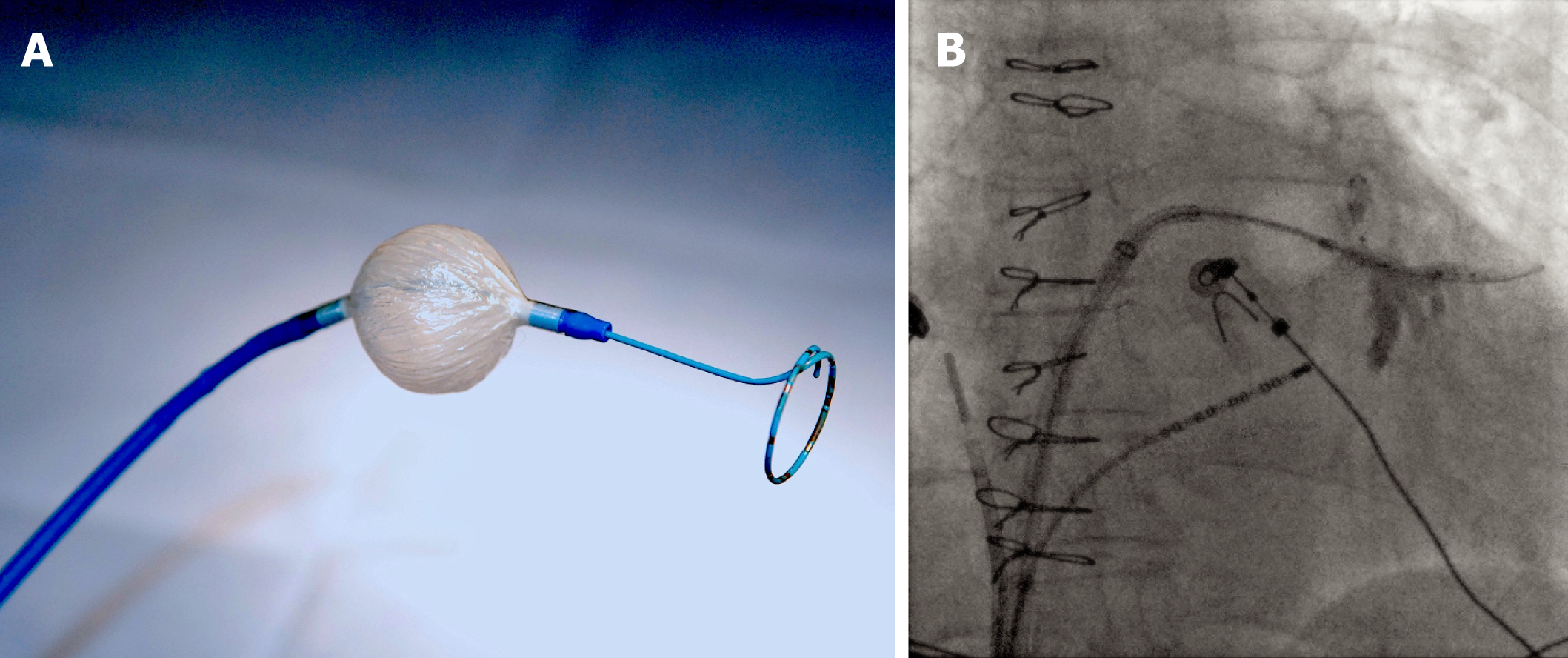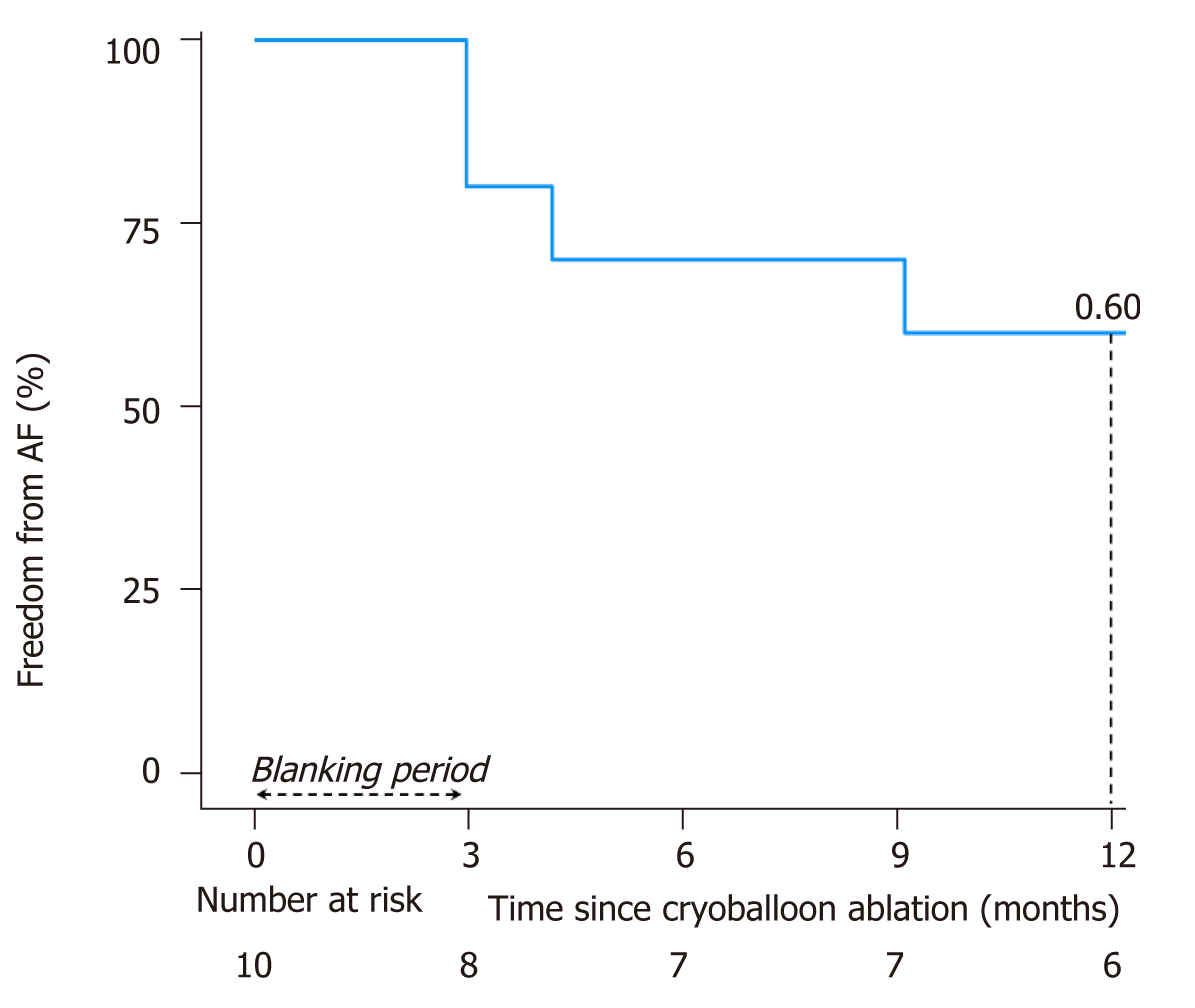Copyright
©The Author(s) 2019.
World J Cardiol. May 26, 2019; 11(5): 149-158
Published online May 26, 2019. doi: 10.4330/wjc.v11.i5.149
Published online May 26, 2019. doi: 10.4330/wjc.v11.i5.149
Figure 1 Cryoballoon ablation for atrial fibrillation in a patient with a sinus venosus atrial septal defect and partial anomalous pulmonary venous return.
A: A 28-mm cryoballoon catheter (Arctic Front Advance, Medtronic, Minneapolis, MN, USA) along with a circular mapping catheter (Achieve, Medtronic, Minneapolis, MN, USA) introduced in its central lumen; B: The cryoballon is positioned at the ostium of the left inferior pulmonary vein (LIPV) in a patient with a sinus venous atrial septal defect and partial anomalous pulmonary venous return. The circular mapping catheter is placed inside the proximal LIPV. Contrast injection reveals complete cryoballoon occlusion of the LIPV.
Figure 2 Kaplan–Meier survival curve of freedom from atrial fibrillation after a single cryoballoon ablation procedure.
- Citation: Abadir S, Waldmann V, Dyrda K, Laredo M, Mondésert B, Dubuc M, Khairy P. Feasibility and safety of cryoballoon ablation for the treatment of atrial fibrillation in patients with congenital heart disease. World J Cardiol 2019; 11(5): 149-158
- URL: https://www.wjgnet.com/1949-8462/full/v11/i5/149.htm
- DOI: https://dx.doi.org/10.4330/wjc.v11.i5.149










